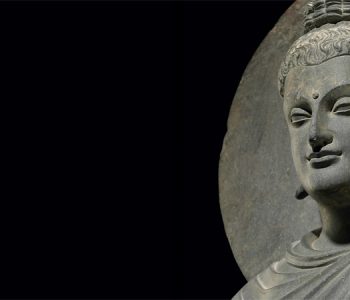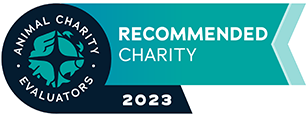Caring For Carnivores In Sanctuaries: The Ethics
Humans have the choice to avoid meat and other animal products. We can get most of our required nutrients from plants, and synthesize supplements for those few that we cannot. However, not all animals have this choice. Obligate carnivores, like lions, require meat to survive and cannot easily digest plant matter. In cases where these animals are in human care, what is the most ethical way to feed them? Some suggest that we hunt wild game, like deer, rather than purchase commercially-available meat. This paper challenges that notion and offers an alternative.
The paper begins by outlining the arguments that a pro-hunting advocate may advance. First, they may argue that wild animals like deer live their lives in freedom, and therefore it is less harmful to kill them than to kill an animal raised in captivity. In this view, captive animals are treated as resources, not living beings. The captive cow never lived a life where it was not treated as a source of meat, while the free deer lived its live as a wild animal. Furthermore, the argument goes, death from a hunter’s bullet is likely quicker and less painful than the fate of most wild animals – starvation, predation, or untreated illness. This argument also states that hunting can be ecologically beneficial in areas without natural predators, and so killing a surplus population of deer would be necessary to avoid overpopulation. Finally, hunting does not subsidize the animal agriculture industry in the same way purchasing byproducts does.
The author of this paper has several issues with the pro-hunting argument. Regarding the first point, that hunting does not treat animals as resources, the author argues the opposite. She points out that a captive carnivore will require multiple deer carcasses over their lifetime, and therefore the deer population must be maintained in the same way a cow or chicken population would on a farm. Furthermore, simply by valuing the life of a single carnivore over that of multiple herbivores, the pro-hunter is viewing the deer as a resource. It is impossible to rely upon an animal – or anyone – for food without viewing them as a resource.
Second, the author points out that the ‘overpopulation’ argument is somewhat misleading and anthropocentric. She argues that wildlife management departments artificially inflate the deer populations of hunting areas in order to keep the industry afloat. Kill limits are imposed in order to keep the population of deer at a hunting-friendly level, rather than an ecologically sound one. The ‘overpopulation’ argument also denies individual deer their agency. They are punished for the ‘sins’ of their species, which does not help the pro-hunter’s argument that deer are not viewed as a resource. Deer populations are naturally-regulated, and hunting can actually hinder the health of an ecosystem rather than help it.
Regarding the argument that deer might be better off being shot than facing a grisly death from wolves or parasites, the author flips the argument around: why not put down the suffering carnivore and save the lives of the deer? The particular pro-hunting advocate that she is arguing against has a “guardianship principle,” according to which humans must make up for the suffering that they cause. In the case of a rescued carnivore, they argue that since humans caused the suffering, they have a duty of restorative justice towards it. The author finds this unconvincing, as the lion likely has no idea what the source of their suffering is and does not care. The guardianship principle is human-oriented; it seeks to make us feel better about our treatment of the lion, rather than actually reduce harm or promote justice.
Aside from the ethical problems with the pro-hunting argument, the author points out some logistical difficulties. Pro-hunting advocates believe that hunters should target sick and elderly deer, as this will cause the minimum amount of suffering and possibly help the deer community. However, they assume that the hunters will be able to identify these animals and that there will be a sufficient number to feed the captive carnivores. Furthermore, they assume that there will be a suitable population of wild game nearby. What are sanctuaries to do if they are not able to find a sustainable source of wild game?
The author argues that, rather than hunting, facilities housing carnivores should simply use slaughterhouse byproducts or directly purchase meat products. She argues that this is compatible with a vegan ethical system, as the demand for meat is institutional rather than individual. The entrenched nature of the animal agriculture industry makes individual abstention ineffective and difficult. Tax breaks, “ag gag” laws and government health guidelines all support animal agriculture as an institution. When an industry has the backing of the government, individual choices have very little effect on its success.
According to the author, demand for animal products is forced upon us by the government and corporate elites, and therefore so is the supply. We should still give up animal products, but this alone does not actually reduce demand in any meaningful way. Only by challenging these institutions can we actually effect change. For example, abolitionists in 19th century America did not resist by simply boycotting slave-produced goods, but by actively fighting against the institutions that supported slavery.
Given the massive size of the animal agriculture industry, the author argues that the slight increase in participation from sanctuaries housing captive carnivores does not increase harm. Hunting, however, is a much smaller industry with less government backing. If zoos and sanctuaries were to hunt for their carnivores’ food, the relative impact would be much larger and create much more harm. Purchasing byproducts is even less impactful, as it does not increase the amount of harm involved in the animal agriculture industry.
Avoiding participation does not actually reduce harm, especially in the fringe case discussed in this paper. We vegans should not concern ourselves purely with abstaining from harm; we need to focus on dismantling the institutional support for immoral practices. This is the only way that we can truly decrease the suffering caused by animal agriculture.
http://ro.uow.edu.au/asj/vol7/iss1/8/




















